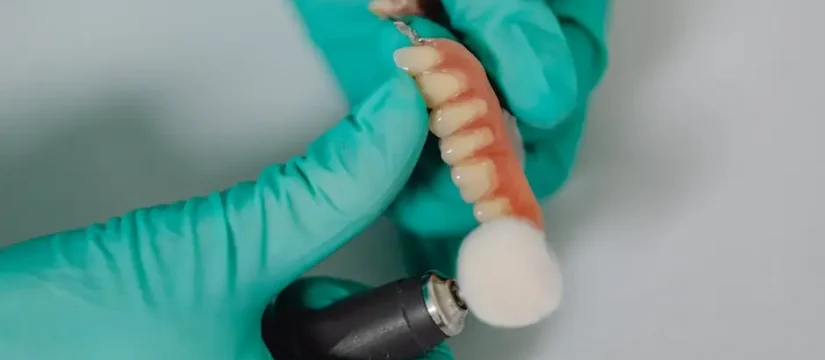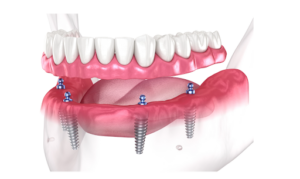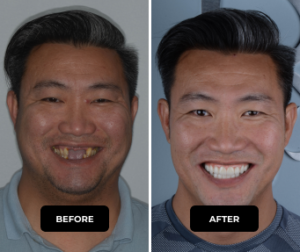
Considering all-on-four dental implants can be an exciting journey towards a new smile! This innovative solution offers a way to replace missing teeth and restore functionality. But what can you really expect during the process? In this guide, we’ll explore various aspects of getting all-on-four implants to help ease your mind and prepare you for the amazing transformation ahead.

1. Understanding All-on-Four Dental Implants
It’s important to grasp the fundamentals of all-on-four implants—what they are, how they work, and why they’re a great option for restoring your smile.
Essentially, all-on-four dental implants involve placing four strategically positioned implants in the jawbone to support a full arch of artificial teeth. This method minimizes the need for bone grafting, making it a less invasive option and suitable for many patients. Each implant acts as a sturdy anchor, allowing for a secure fit of the prosthetic, which looks and functions just like natural teeth.
2. Initial Consultation Insights
Your journey begins with a consultation where your dentist will assess your oral health, discuss your goals, and outline the treatment plan tailored for you.
During this initial meeting, expect to review your medical history and any previous dental work, as this will guide your treatment plan. The dentist will likely take X-rays and a 3D image of your jaws and perform a thorough examination to evaluate your jawbone’s condition. This is the perfect time to ask questions about the process, recovery, and any concerns you may have.
3. The Necessary Preparations
Preparing for your all-on-four implants may include x-rays, scans, and sometimes, preliminary dental work to create a healthy foundation.
These preparations are crucial for the success of your implants. For instance, if any teeth need to be extracted or if there’s periodontal disease, addressing these issues first is essential. Additionally, your dentist may recommend certain lifestyle changes, such as quitting smoking, to improve healing and outcomes.
4. Understanding the Surgical Process
Learn what happens during the surgery itself, including anesthesia options and what to expect during the procedure.
The surgery is typically performed under local anesthesia, sedation, or general anesthesia, depending on your comfort level and the complexity of your case. The procedure involves the precise placement of the implants into your jawbone. You may be surprised to know that this can often be completed in just a few hours, allowing you to leave with a temporary set of teeth.
5. Recovery Timeline After Surgery
Recovery takes time, but knowing what to expect in the days and weeks following surgery will help you manage your healing process.
Initially, you might experience swelling and discomfort, but this typically subsides within a few days. Rest is paramount, and sticking to a recommended diet will support your healing. Your dentist will provide guidelines on how to care for your mouth during recovery, which often includes avoiding hard or crunchy foods to prevent irritation.
6. Initial Discomfort and How to Manage It
Mild discomfort is normal after surgery; understanding pain management strategies can make the transition smoother.
Your dentist will likely prescribe pain relief medications, but many patients find that over-the-counter options are sufficient. Ice packs can also be helpful in reducing swelling and numbing pain in the first few days. Following the prescribed aftercare will lead to a more comfortable recovery, allowing you to focus on adjusting to your temporary teeth.
7. Dietary Adjustments Post-Implant
You’ll need to modify your diet after getting all-on-four implants—discover which foods to enjoy and which to avoid during recovery.
For the first few weeks, soft foods like yogurt, smoothies, and mashed potatoes are ideal. Gradually, as you heal, you can start reintroducing firmer textures. Remember, your new implants need time to integrate into your jawbone, and sticking to a gentle diet will greatly aid this process.
8. Choosing the Right Temporary Teeth
While your implants are healing, you might be fitted with temporary teeth; learn the options available to you.
Temporary solutions can vary from removable dentures to fixed temporary bridges. Your dentist will discuss these options, helping you choose one that suits your lifestyle and provides comfort while your implants heal. It’s a great way to ensure that you still feel confident during the healing process.
9. Follow-Up Appointments Explained
Regular follow-ups are essential for monitoring your progress—here’s what these appointments typically involve.
These appointments allow your dentist to check the healing of your gums and the integration of the implants. Radiographs may be taken to ensure everything is on track. Open communication is encouraged, so don’t hesitate to report any concerns or discomfort you may have during recovery.
10. Long-term Care and Maintenance
After healing, learning how to properly care for your all-on-four dental implants is vital for longevity.
Maintaining excellent oral hygiene will be crucial going forward. This includes regular brushing, flossing, and routine dental check-ups. Your dentist may provide specific care instructions tailored to your implants to help prevent complications, ensuring that your investment lasts for years.
11. Addressing Potential Complications
Understanding uncommon complications can help you be proactive and informed throughout your treatment journey.
Although complications are rare, being aware of potential issues like infection or implant failure is important. Your dental team will discuss warning signs to watch for, empowering you to seek help if anything seems off. An informed patient often navigates the process more confidently.
12. Emotional Adjustments to Your New Smile
It’s normal to experience emotional changes; exploring how to embrace your new look can boost your confidence.
The journey to a new smile is not just physical; it can profoundly impact your self-esteem. Many patients report feeling initially self-conscious, but with time and healing, that often evolves into pride. Embrace the transformation, celebrate milestones, and don’t hesitate to discuss any feelings with your support system.
13. Comparing All-on-Four with Traditional Implants
Know the differences between all-on-four implants and traditional methods to make an informed choice.
All-on-four implants differ significantly from traditional implants, primarily in cost, treatment time, and invasiveness. While traditional methods often involve multiple implants for each lost tooth, all-on-four uses just four implants for an entire arch. This translates to fewer surgeries, shorter healing times, and, in many cases, a more economical solution.
14. Cost Factors to Consider
Getting all-on-four implants is an investment; understanding pricing and financing options will help you budget effectively.
Costs can vary based on dentist expertise, location, and additional procedures required (like extractions or bone grafts). It’s essential to discuss all potential costs upfront and explore financing options. Many dental practices offer payment plans to ease the financial burden, making this life-changing procedure more accessible.
15. Final Thoughts on Your Journey
Wrap up by reflecting on the transformation ahead and the positive impact that all-on-four dental implants can have on your life.
Your journey towards a new smile through all-on-four dental implants is an investment in yourself. By understanding what to expect at every stage—from consultation to recovery and beyond—you can embrace this change with enthusiasm. Enjoy your new smile; it’s not just about aesthetics but the increased confidence and quality of life that come along with it!

